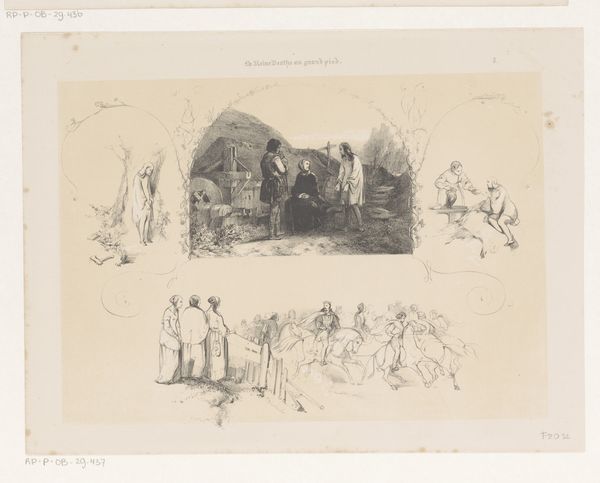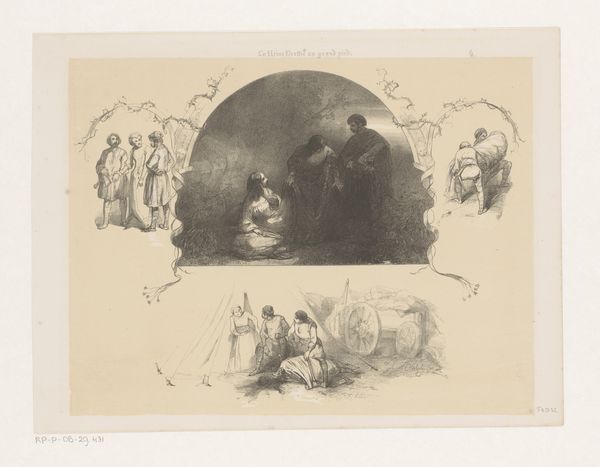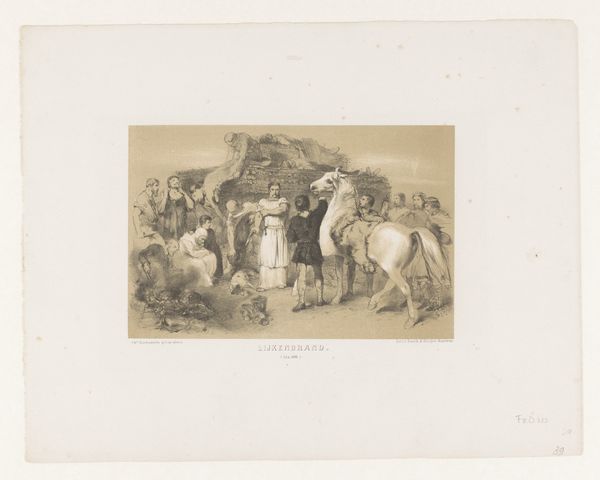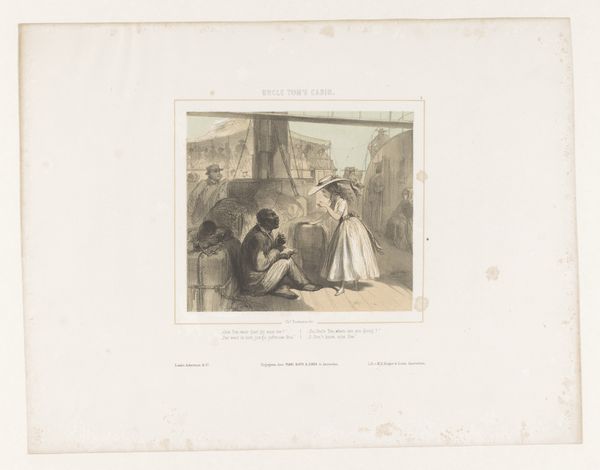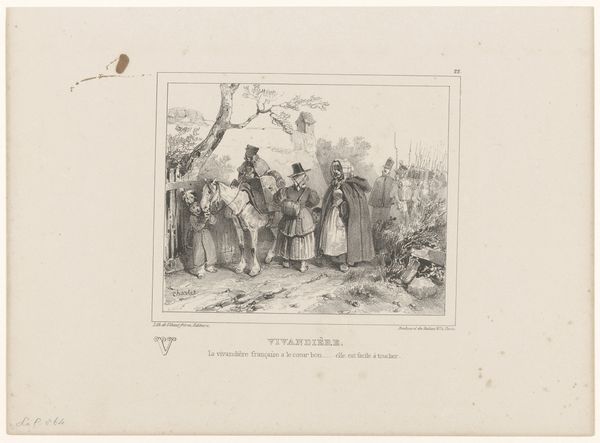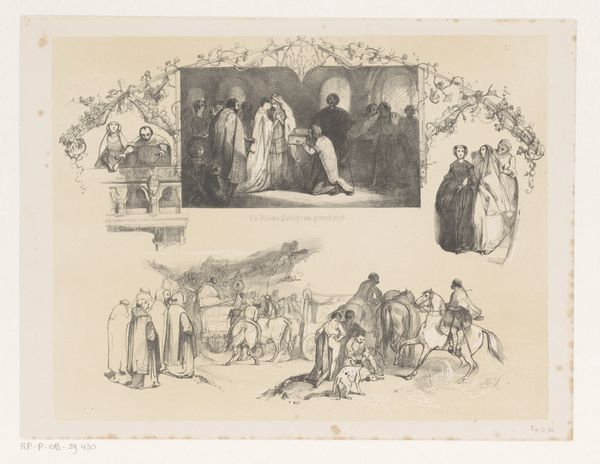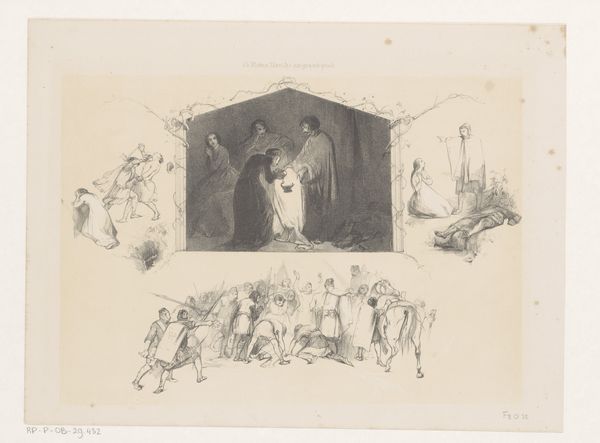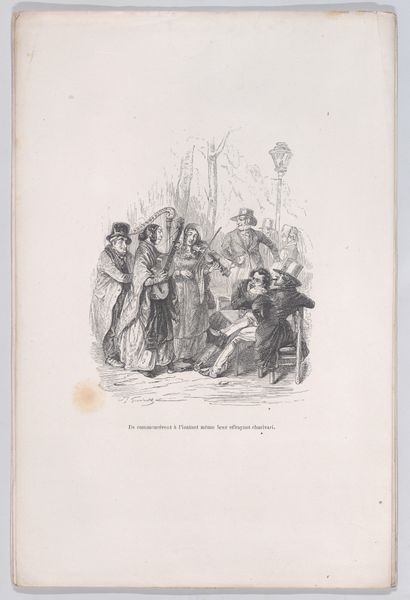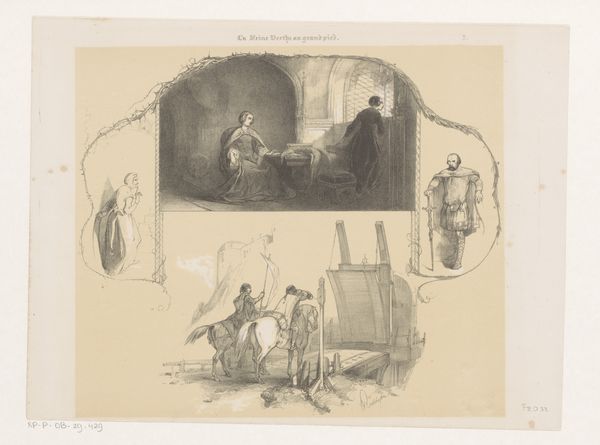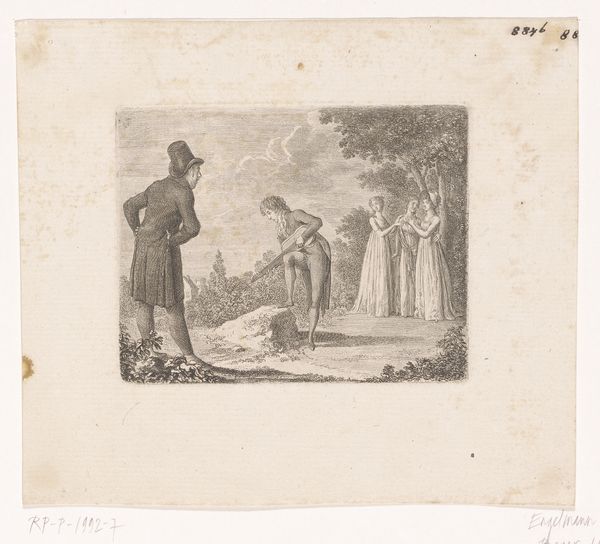
drawing, paper, pen
#
drawing
#
narrative-art
#
landscape
#
paper
#
romanticism
#
pen
#
genre-painting
Dimensions: height 252 mm, width 337 mm
Copyright: Rijks Museum: Open Domain
Curator: This pen drawing, dating from before 1842, is titled "Begging Woman Before Queen and Old Woman." It's the work of Charles Rochussen and resides here in the Rijksmuseum. It's really an interesting mix of scenes on a single sheet of paper. Editor: It's fragmented, almost dreamlike. The linework gives it a somewhat unfinished quality. Is this typical of Rochussen’s drawing style? The narrative is almost secondary to this airy, somewhat haunted feeling I'm getting from the figures. Curator: He often worked this way, showing studies or explorations of themes in a composite form. What interests me most is the deliberate use of the pen to create the texture. Look closely, you see cross-hatching everywhere to build tone, adding density. The different vignettes show his process and technique in creating narrative imagery, how he used these figures repeatedly. It's like witnessing the cogs of the machine, isn't it? Editor: Absolutely, it’s about the modes of representation! It seems pointed in its display of unequal distribution of resources: we’re seeing poverty literally petitioning power. This isn’t just observation; it feels like a critique of social stratification. How might period sensibilities shape how Rochussen and his audience perceived these inequalities? Curator: Context is vital, yes, for both its creation and its reception. Romanticism, evident here, emphasized emotion and the individual, but often softened realities. Rochussen provides details of dress, stance and facial features. Think about the paper, and the production. Cheap? Readily available? How many drawings like this was he able to produce and, ultimately, sell or gift to others? These factors dictate both artistic output and accessibility to a larger viewing audience. Editor: The layering of meaning within its making then, as you said. Seeing the drawing through this lens enhances its message, a quiet but potent indictment. A drawing like this invites conversation not just about aesthetics, but about social responsibility then and now. Curator: Indeed. Understanding the interplay between the material and social circumstances reframes how we engage with his work. It goes beyond aesthetic pleasure. Editor: For sure! That incomplete effect draws us in and makes it so pertinent.
Comments
No comments
Be the first to comment and join the conversation on the ultimate creative platform.
